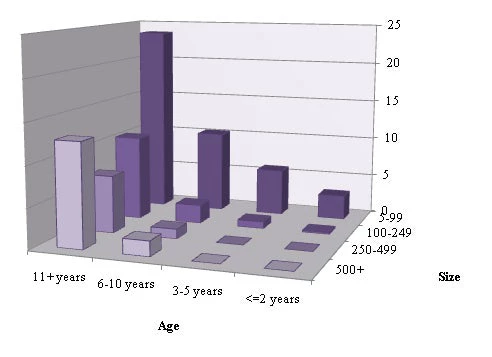
There remains a surprising amount of disagreement over precisely what “urban” means despite the ubiquity of the term in our work. Are urban areas defined by a certain amount of artificial land cover such as permanent buildings and roads? Or are they more accurately described as spatially concentrated populations? The answer often depends on what country you are in, as their administrative definitions of urban areas can vary widely across and between these two dimensions.
Without a globally consistent measure of urban areas, it can be difficult to track changes in built-up areas (land surface coverage comprised of buildings and roads) and population growth across time and space. This impacts how policymakers may understand and prioritize the challenges cities face and what investments or reforms may be needed. In a new paper, “ Bright Lights, Big Cities: a Review of Research and Findings on Global Urban Expansion,” I provide a brief introduction to some of the current approaches for measuring urban expansion and review the comparative findings of some recent studies.
The UN’s World Urbanization Prospects (WUP), perhaps the most comprehensive and widely cited measure of urbanization across the world, draws from a compilation of country-level population totals based on administrative definitions. A key weakness with this set is that since each country defines “urban” differently, it is difficult to accurately compare one country’s urbanization to another, as well as to estimate the urban population of a group of countries or the world itself. Recent work has provided more sophisticated ways to measure urban growth and expansion using both satellite map data and careful application of population data.
The growing role of population data and mapping technology
The increased quality and availability of satellite map data has given us a better view of the form and extent of human settlements, for example:
- Algorithms are used to distinguish the colors and patterns on maps to discern between built-up areas and natural ground cover or water-covered surfaces.
- Moderate Resolution Imaging Spectroradiometer (MODIS) provide medium resolution maps (with resolutions of about 500m) that specialists have used to map urban built-up areas across regions.
- Higher resolution maps such as Quickbird (around 2m or less and) can be used at the city level to estimate different land use types, based on the colors, shapes, and ground cover.
- Some recent work has even begun to use maps that distinguish different types of development for estimating natural disaster risks in urban areas.
Population-based estimates of urban areas aim to refine the application of available population census data (such as what is used for the WUP). These approaches use known population centers and apply a grid across administrative boundaries (usually of about 1km 2). They then produce an estimated distribution of the population within built-up and non-built-up areas within each grid cell, which corresponds more closely to where people are likely to reside (see the example below). Several approaches for estimating urban populations, such as Worldpop and GHSPop, build on this approach to standardize measurement by applying minimum population threshold and population density standards to define urban settlements, and then calculating the total number of people within these areas.

These techniques provide a different picture of the global urban population from the WUP. For example, the populations of Africa and South Asia may be much more “urban” than what official estimates suggest. By the same approacch, Latin America’s population may be significantly less “urban” than otherwise thought. However, there is no consensus on the minimum settlement population and density thresholds ascribed to urban areas, and estimates can vary greatly depending on these adjustments.
The next big step on this work is to link this population-based approach with a standard global-level map of built-up areas. This would allow for a consistent and comparable estimate of the total number of people and built-up areas across the world.
In my next post, I will offer some caveats and suggestions for researchers and practitioners on how to consider using these data and areas for future improvement.
Download draft paper "Bright Lights, Big Cities: a Review of Research and Findings on Global Urban Expansion" and feel free to provide your feedback by posting a comment.



Join the Conversation